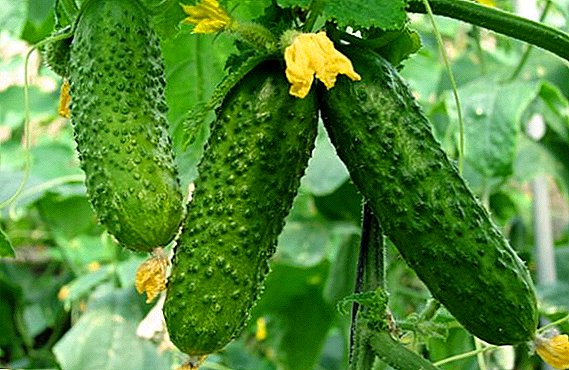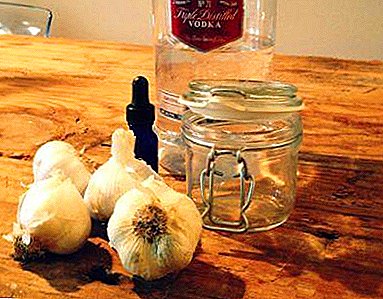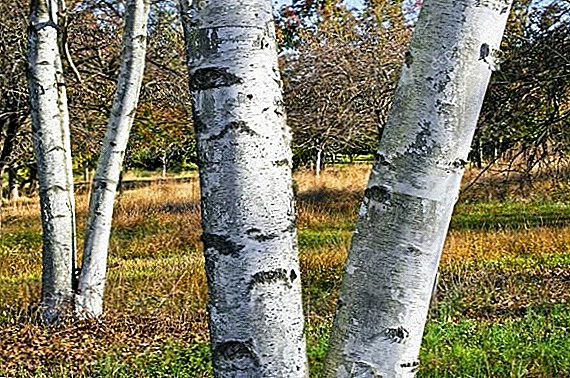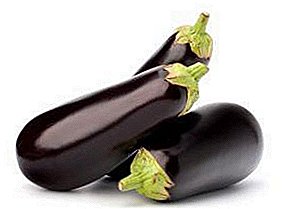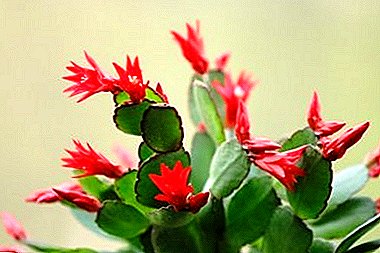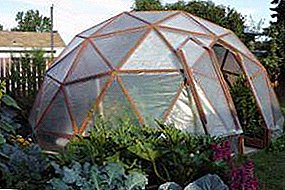
Dome greenhouse (another name - geodesic dome) - effective and, perhaps, the most unusual and rare design of those who use summer residents on their sites.
This structure has a hemispherical shape and consists of triangular elements forming a strong frame.
The features of such a greenhouse are not only in the original appearance, but also in some functional characteristics, which will be discussed below.
Features of the dome greenhouse
One of the distinguishing features Spherical greenhouse is the ability to maintain positive indoor temperature for a long time in the absence of auxiliary heating.
This effect is achieved due to the fact that in the dome structure the air heated in the daytime rises, and at night it is forced out by cold air masses, as a result of which the heat descends down to the plants. Thus air circulation occurs, due to which a favorable microclimate is formed inside the building.
Another feature The greenhouse is that, having a streamlined shape and a wide base, this design is able to withstand strong winds.
 TO benefits Dome greenhouses include:
TO benefits Dome greenhouses include:
- quality bearing capacity, which is achieved due to the uniform distribution of the mass of the structure. This allows the structure to withstand more significant loads, unlike other types of buildings;
- the stability of the structure provides the possibility of building a greenhouse in earthquake-prone areas;
- the minimum surface area of the side walls contributes to a significant reduction in the consumption of building materials.
There are spherical buildings and some minuses:
- sloping walls of the structure do not allow placing a large number of beds indoors;
- due to the presence of multiple joints, the structure needs to be thoroughly sealed and insulated;
- preparatory measures associated with the calculation of materials and components, are accompanied by some difficulties, which is caused by the need to use parts of a strictly defined configuration.
Frame materials
The following options are possible here.:
- Wooden slats. The advantages of this material are environmental friendliness and easy installation.
- Metal. Such structures are strong and durable, but are subject to corrosion, so metal structures also need to be processed.
- Plastic. Strong, flexible and hermetic material, but more expensive and less durable than metal.
As covering materials suitable the same options as in the cases with other types of greenhouses, namely:
- glass;
- polyethylene film;
- polycarbonate.
Polyethylene does not have insulating properties inherent to polycarbonate, however, in terms of transparency and ease of installation, it is not inferior to it.
Polycarbonate less transparent than glass, but it retains heat well, and the assembly of a spherical (round, domed) polycarbonate greenhouse does not cause any particular difficulties.
Glass It is transparent and durable, but it is heavy and expensive.
Preparatory activities
 Before embarking on a greenhouse, need to prepare a place for construction. It is desirable that this was an open solar space.
Before embarking on a greenhouse, need to prepare a place for construction. It is desirable that this was an open solar space.
The selected area should be cleaned of unnecessary objects and vegetation, after which you need to carefully level the site.
The nature of further action due to the fact will the foundation be built for a greenhouse or not. In the case of a dome greenhouse, the construction of a foundation base is not a mandatory measure due to the lightness of the structure.
But if, nevertheless, the decision was made in favor of a more solid support, then here it is possible to use either a tape type of foundation or a pile.
When arranging the strip foundation, the next preparatory stage will be to dig a trench, whereas when choosing a pile model, this procedure will not be necessary.
If the construction of the foundation is not provided, then the area should be covered with a protective non-woven material - this will avoid the growth of weeds. Then on top of the material you need to lay a layer of gravel and level it well.
Next, you should determine the size, in accordance with which you need to make a drawing. Here is one of the possible options:
- dome diameter - 4 meters;
- height - 2 meters;
- the number of equilateral triangles with such dimensions is 35 pieces, the length of each side is 1.23 meters.
Next, you should calculate the area of one triangular fragment, after which the total area of the structure is divided by the resulting figure.
Base assembly
The base is a small height wall, which along the perimeter has the shape of a polygon.
Should not be limited too few corners, since in this case it will be necessary to make large triangular parts, with the result that the structure will be less similar to the dome.
The most suitable option - a polygon having 10-12 angles. As for the height of the base, there are also certain criteria. Too low a height will cause inconvenience in handling planted plants. The best parameters in this case are 60-80 cm.
A photo
Dome greenhouses: photo examples.


Round greenhouse dome.

Dome greenhouse do it yourself: drawing.

Frame construction
How to make a greenhouse geocupol (sphere, hemisphere) with your own hands? After calculating this procedure includes the following steps:
- Prepared bars to assemble the frame. To do this, they should be cut into parts of the same length.
- In accordance with the dimensions provided for in the drawing, bars for the door and the window are cut (if such is expected in the construction to be erected).
- Further, based on the size of the triangles, you should cut the fragments of the future coverage.
- Triangles are being assembled.
- Assembled parts are connected to each other with self-tapping screws. Each element should be fixed at a small angle so that the dome shape is obtained.
- The door is being assembled. If it is made of metal, then it is better to weld it, since the bolted construction may loosen over time.
- The next step is to attach the hinges to the door and the doorway.
- The door is hinged.
- The finished structure is installed on the base.
- The final stage - installation of the coating. Self-tapping screws are used for fastening polycarbonate, and beadings for glasses. The film is attached with clamping wooden slats, which are nailed to the frame.
And here you can watch a video about dome greenhouses.


